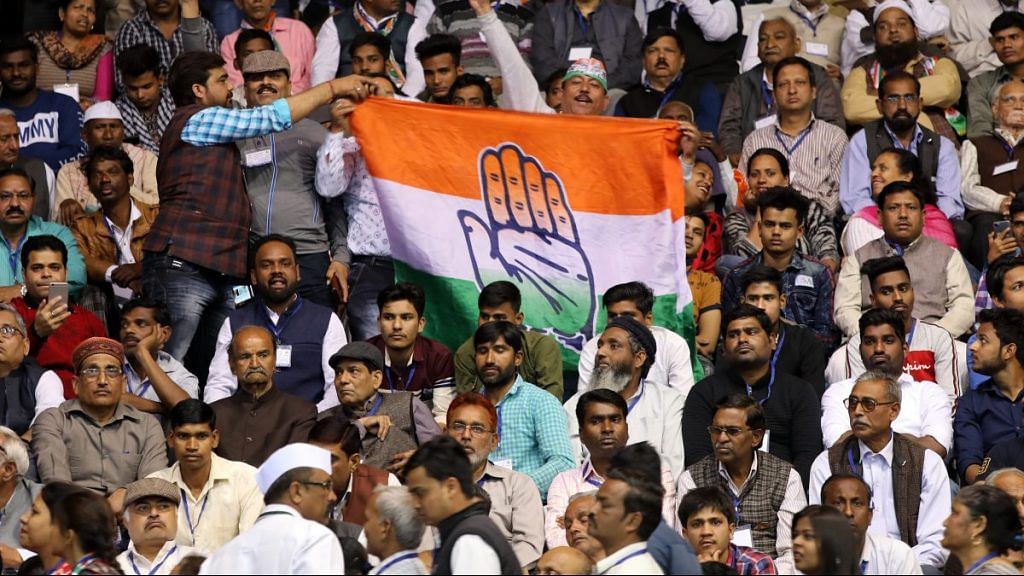Numerous experts have proclaimed that the Congress’s victory in Chhattisgarh, Madhya Pradesh, and Rajasthan in December last year could lead to huge losses for the Bharatiya Janata Party in these states in the ongoing Lok Sabha elections. Analysts have observed that assembly election results have a large influence on Lok Sabha election held within a short span of time. My research shows that the influence of assembly elections on succeeding general elections depends on the nature of competition among political parties in the state.
In multi-party states, assembly elections cannot predict succeeding general election outcomes. On the other hand, in two-party states, assembly elections provide an indication of who will win in the general elections. This, however, does not imply a simple correspondence between the votes a party receives in an assembly election and the Lok Sabha election. Both national parties – the BJP and the Congress – get a ‘bump’ from positive assembly election results in two-party states but the bump that the Congress and the BJP receive has changed over time. Until 1991, the Congress was the dominant party and it received a large bump, but since 1996 the bump has now been transferred to the BJP, i.e. positive spillover effects from assembly elections to the next Lok Sabha election are now greater for the BJP than the Congress, especially in two-party states.
Also read: 7 new finds on India’s elections: Why Prannoy Roy’s book is the definitive take on 2019
To illustrate these trends, I look at the percentage of Vidhan Sabha (legislative assembly) seats in state elections that have the same party winning the encompassing Lok Sabha seat in the subsequent general election. If assembly elections could predict the results of Lok Sabha elections that follow soon after, we could expect to see a large proportion of assembly seats where the winning party is the same as the winning party in the Lok Sabha seat within which that assembly segment is contained.
I find that in two-party states such as Gujarat, Madhya Pradesh, Rajasthan, assembly election results are increasingly able to predict the winner in Lok Sabha elections that take place two years after the state elections. In 1991, less than 40 per cent of the assembly seats had the same winning party in the Lok Sabha. This proportion has steadily increased to almost 70 per cent for these two-party states (Figure 1). But the trend is not the same for states such as Karnataka, Punjab, and Uttar Pradesh where multiple parties are contenders. In these states, the proportion of assembly seats that have the same winner as the Lok Sabha has been falling and now hovers around 30 per cent (Figure 2).
In two-party states, the Congress and the BJP get a ‘bump’ in Lok Sabha elections that follow assembly elections. The multiplier effect was greater for the Congress in the pre-1996 era and is now larger for the BJP. In fact, the BJP has the same multiplier the Congress had before 1996, suggesting that the Congress may no longer be seen as the natural party to govern India – an advantage it held until 1996.
Also read: Why media ground reports, opinion & exit polls don’t agree with each other on elections
Each data point in the following graphs represents the vote share of a party in an assembly segment in a state election and its vote share in the Lok Sabha constituency encompassing it in the subsequent general election. The differences in the slopes of the lines of best fit show the differences in spillover effect for the BJP and the Congress.
Figure 3: Congress pre-1996 trend
Figure 4: BJP pre-1996 trend
I find that prior to 1996, there was a larger spillover effect for the Congress party as compared to the BJP. This makes sense considering the uncontested national dominance of the Congress and the fragmentation and largely local presence of the BJP before 1996.
Figure 5: Congress post-1996 trend
Figure 6: BJP post-1996 trend
Post-1996 graphs show a complete reversal of trends taking place. The post 1996 multiplier for the Congress is lower than that of the BJP. This provides strong evidence that the BJP has begun to take over the Congress’ role on a national stage, and is being increasingly seen as the national party that can govern India. The BJP’s multiplier is similar to that of the Congress’ pre-1996, suggesting that the BJP’s current national prowess is reminiscent of pre-1996 Congress dominance.
Wins by the Congress in assembly elections in 2018 will translate into winning back some Lok Sabha seats it had lost in the 2014 general elections, but this improvement will be only marginal because of the smaller multiplier the Congress receives in Lok Sabha elections. We can still expect the BJP to win Rajasthan, Madhya Pradesh and Gujarat. What remains to be seen is if the Congress can soon go back to its pre-1996 glory days or the BJP’s emergence as the party of national governance is here to stay.
The author is a student at UC Berkeley, majoring in Computer Science and Economics. Views are personal.
This analysis was conducted using The Indian Election and Candidates Database 1961- today (Jensenius and Verniers 2017) from the Ashoka University-maintained portal Lok Dhaba along with a delimitation dataset from Francesca Jensenius.
